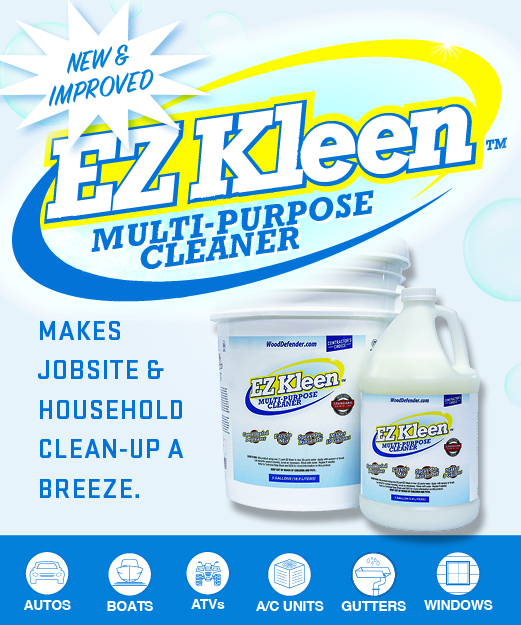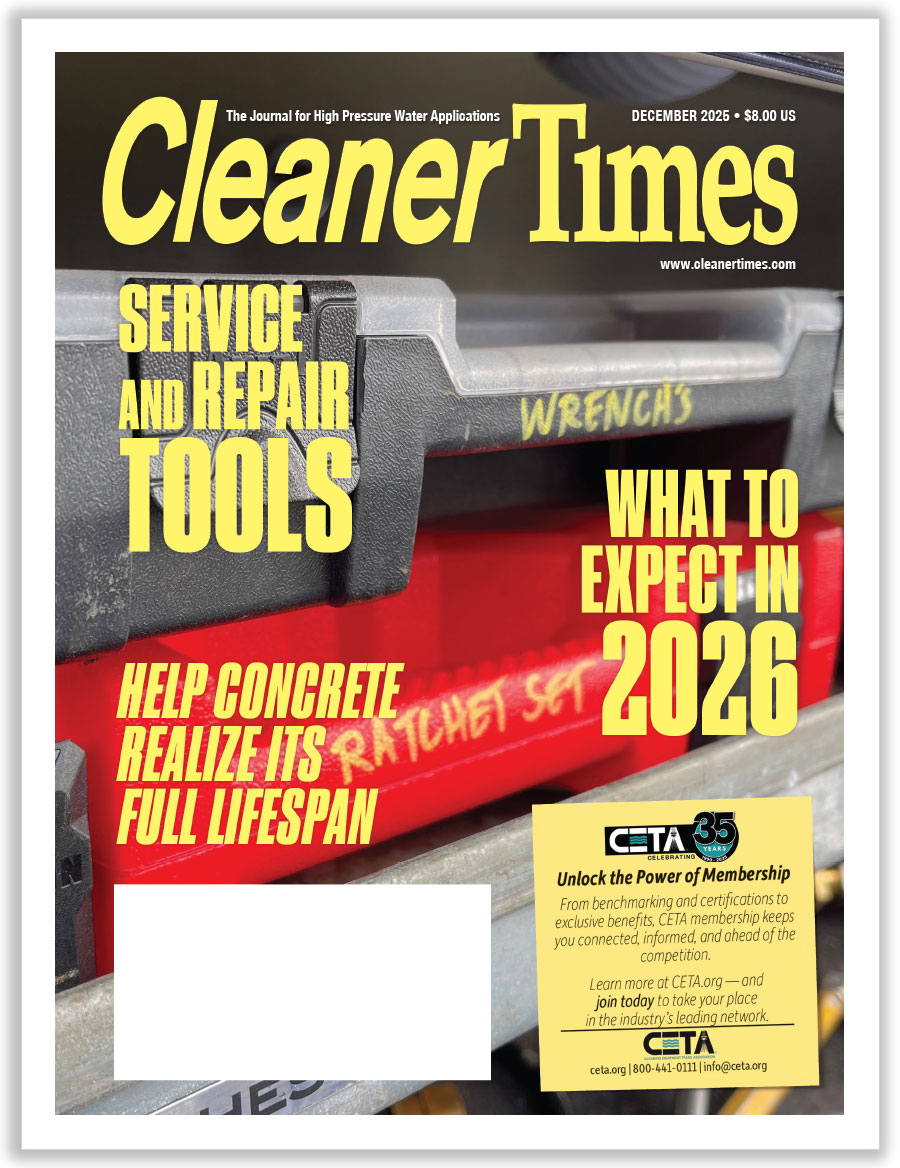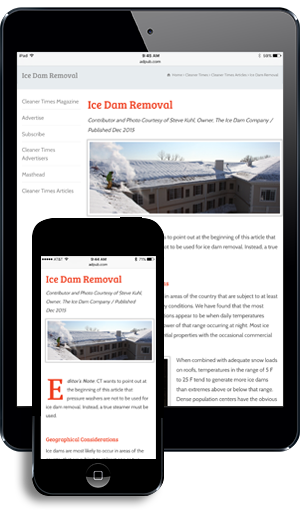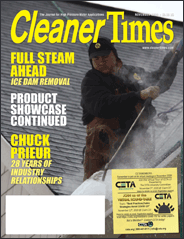
Regular Fleet Washing Benefits
by Diane M. Calabrese |Published February 2025
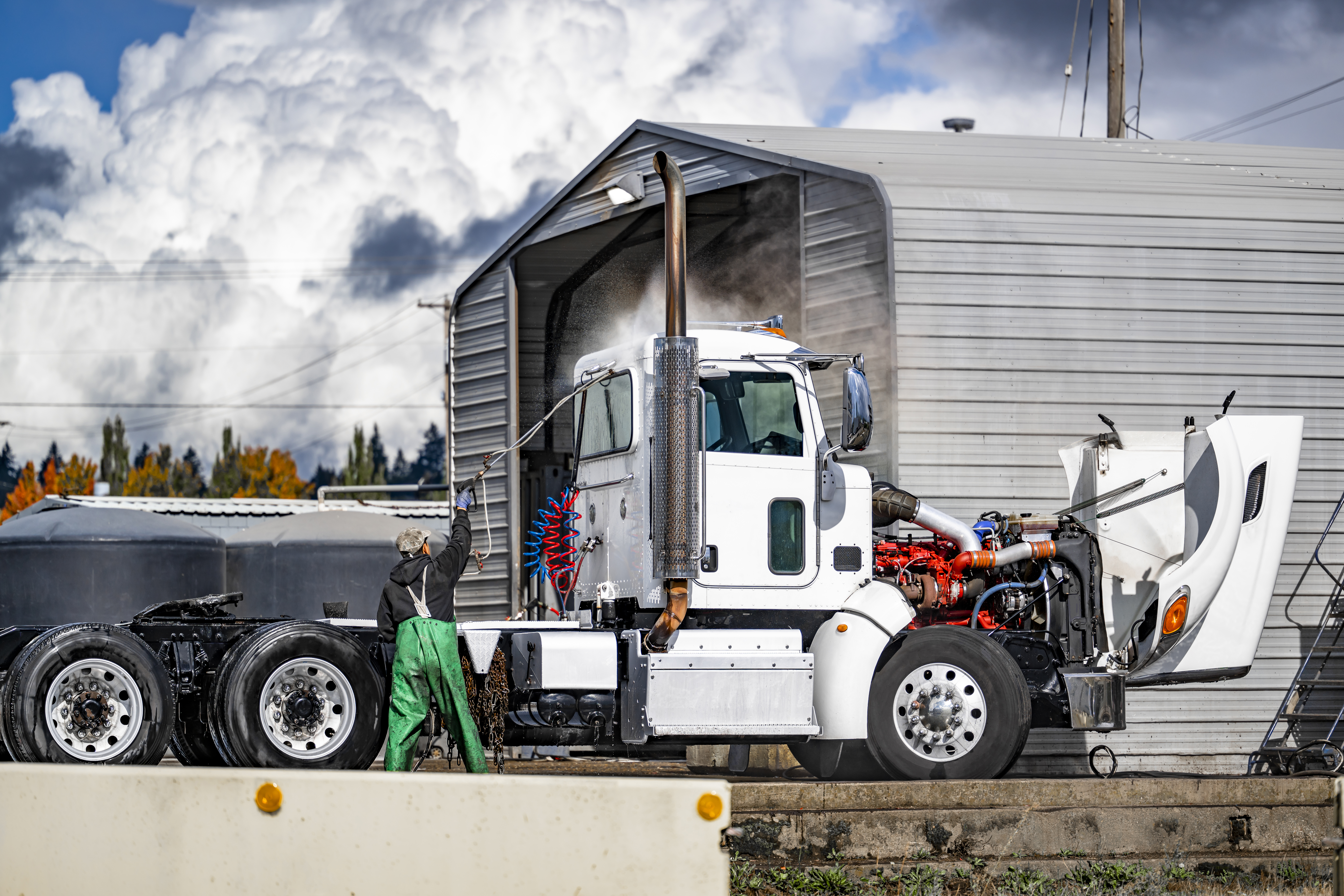
Safety. Image. Safety again.
A soiled vehicle can be a dangerous vehicle. Occluded windows make it difficult to see. Dirty lights make it difficult to see and be seen.
Thus, the first benefit of regular washing is the same as the last: safety. Image is a nice side benefit. Still, it’s all about keeping everyone safe. No driver wants to be behind an 18-wheeler with muddy flaps on a fast-moving interstate.
“Regular fleet cleaning is imperative in all businesses with equipment and fleets,” says Brad Howland, president of Easy-Kleen Pressure Systems Ltd. in Sussex Corner, NB, Canada. “Customers require your iron and rolling stock to look good. It’s your first impression of your business.”
Howland encourages us to start at the beginning: Don’t make the washing process difficult.
“Ease of use is the most important feature to consider when installing a wash system,” says Howland. “How hard is it to get ready to wash?”
Make it too complicated, and washes may get skipped. “When you want air, you do not drag your compressor around with you,” says Howland. “You put the compressor in a central location and pipe air through your building to where you want air to quick-couple in or pull line from the hose reel, so the air is on demand.”
Use the same configuration with a pressure washer, says Howland. “Install the pressure washer in a clean, dry space with water, fuel, chemical, and machine correctly vented—with auto start and stop—and pipe it through your building to where you want to clean. Have hose reels installed at each location so when you need to clean, it is easy.”
The easier something is, the more likely it is to get done. With the arrangement Howland recommends, a fleet owner can “take the wand and pull the desired length of hose off the reel and squeeze the trigger” to wash as needed and roll the hose back up when finished.
“Every new fleet and equipment service building should consider a drive-thru wash bay,” says Howland. The equipment can then be driven into the bay and washed.
Arrange the optimal setup by keeping high pressure hoses on a track to keep them off the floor, says Howard. Also keep the pressure washer out of the wash bay so that it’s in a dry location.
“Install the pressure washer correctly, and you will be able to keep your equipment cleaner and save time,” says Howland. And be sure to buy a machine that is designed with the user in mind.
The pressure washer should be easy to maintain and service, says Howland. Seek out machines that demonstrate the manufacturer had the end user in mind.
Industry Variation
Regular fleet cleaning coincides with different intervals across different industries. “The interval is highly d
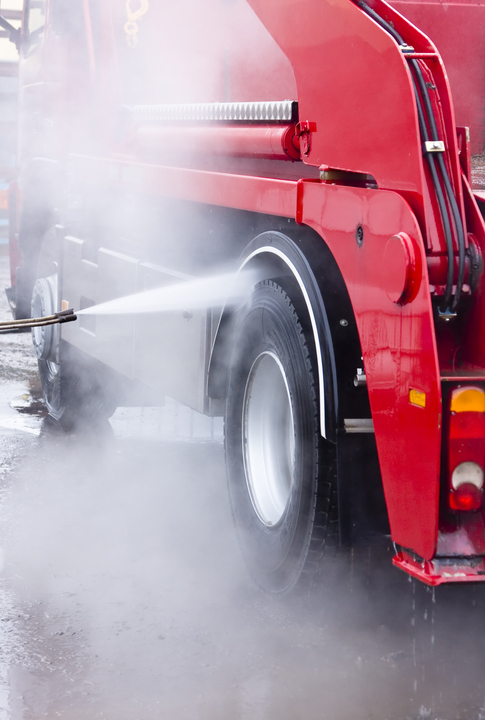
ependent on the nature of the fleet,” says Joseph Daniel, CEO of ITD Chemical in Tucker, GA.
“In general a weekly cleaning for most fleets will suffice,” says Daniel. “However, for fleets in the concrete and asphalt industry, for example, daily cleaning is required, or when a job ends with a particularly soiled vehicle.”
Routine cleaning should be part of the logistics for every fleet operator. “Regular— ideally, weekly—fleet cleaning is critical to maintaining appearance and longevity of assets,” says Daniel. “It makes the cleaning process easier for the operator, reduces chemical usage, and keeps assets in their best shape.”
How many negatives can accumulate if cleaning is skipped? “Allowing the fleet to become soiled and go without maintenance cleaning for months on end only leads to irreversible damage to surfaces, difficult cleaning processes, frustrated operators, and reduced-value assets,” explains Daniel.
There are steps fleet owners can take to maximize intervals between cleaning, says Daniel. For example?
“It can be beneficial to use a cleaning product with carnauba wax built into it. In addition to the cleaning step, this wax coating provides protection and anti-redeposition qualities that allow a longer time to elapse between cleanings, not to mention a more attractive and glossier surface,” says Daniel. He adds his company provides several standalone products in the coating category.
Impressive Numbers
Saving time and saving dollars are often one and the same. So it is with some benefits of fleet washing built firmly into company logistics.
“Routine fleet cleaning addresses the issues of equipment longevity by proactively removing accumulated grime at designated mileage levels,” says Jason Rhoads, director of marketing at Whiting Systems Inc. in Alexander, AR. “Our company’s business case ‘Cost of Dirt’ lays out at least 20 percent overall savings on maintenance cost per vehicle.”
Rhoads points us to information from the Federal Motor Carrier Safety Administration (FMSCA) that ranks brake and lighting issues as the top reason for an out-of-service violation. It’s a violation that “all too often could be avoided with proactive routine fleet cleaning,” he explains.
Among the products Rhoads’ company offers to fleet washers are autonomous gantry systems, drive-through touchless wash systems, and internal trailer wash-out systems. Owners can slash the annual maintenance cost for a single vehicle by 20 percent with regular washing, says Rhoads. That’s a considerable savings that grows with the size of the fleet.
“Proactive routine fleet cleaning reduces wash-associated costs by preventing excessive buildup that requires more time, labor, and chemistry to address,” explains Rhoads. “One of the biggest benefits is that it creates a positive standard for all that are associated with the operation of the trucks; and, it provides a rolling billboard reference of this standard.”
If prudence prevails and a regular schedule is maintained, additional cleaning is seldom required. “We very rarely see additional spot cleaning,” says Rhoads.
“We advise fleet owners to follow the wash process to achieve maximum intervals between cleanings,” explains Rhoads. “A missed spot on a cab back today turns into a hard-to-clean area after another 5,000 miles.”
A prospective wash-system buyer should be able to compute likely return on investment (ROI) by considering the most significant variables. Rhoads gives us an example of factors to weigh and return that may be expected with a gantry configuration.
“The ROI is dependent on a customer’s current head count, chemical selection, current wash process, and future wash implementation with a gantry,” explains Rhoads. “Typical ROI requires one hundred plus washes a month for seven years. This encapsulates savings on maintenance to vehicles.”
Summing It Up
Fleet owners realize gains from regular washing irrespective of the number of vehicles on their roster, but there is one caveat. “Identifying the biggest tangible benefit to the fleet owner will vary based on their pain points, the type of fleet they operate, geographical location, and the size of vehicles, and industry they serve,” explains Chad Reiffer, distribution program manager at Hydro-Chem Systems in Caledonia, MI.
Yet there are transcendent outcomes of “maintenance and operational cost benefits, safety and compliance, company image, and brand awareness,” says Reiffer. He gives some examples.
“Regular washing is proven to prevent the likelihood of DOT inspections and fines and prevent contamination and spread of viruses around farm and food haulers,” says Reiffer. “All of this leads to fewer fines, less downtime, and a reduced risk for insurance costs or claims.”
Then, there’s the moving image of the company. “Fleet vehicles are seen by upwards of 20,000 to 30,000 people every day,” says Reiffer.
Even when regular fleet washing is built into the business plan, owners must be prepared for additional cleaning. “This can include—but is not limited to—engine degreasing, frame degreasing, undercarriage cleaning, trailer washouts, sanitizing, decal removal, and interior cab cleaning,” says Reiffer.
Again, the type of industry served by the vehicles will dictate the type, frequency, and extra cleaning needs. But there are some general considerations.
“For best results and maximum efficiency with your wash process, our company advocates that fleets be washed on a weekly or bi-weekly basis,” explains Reiffer. He adds, “Exposure to weather elements such as snow, ice, salt, and deicer” demands extra washing.
Moreover, whole categories of hauling trucks may require daily washing, explains Reiffer. Among them are fleets hauling contents like aggregates and liquid. Also on the list of vehicles requiring more attention are those with specialized graphics or polished surfaces.
A fundamental decision each fleet owner must make is whether “in-house” or “outsourced” washing fits the business model better, explains Reiffer. Taking the in-house approach allows greater flexibility in choosing the interval. And there is “a lower overall residual cost—chemical and labor, with the upfront investment in specialized equipment and detergents.”
Whether washing is outsourced to a mobile contract cleaner or a retail commercial wash, the benefit is the same, explains Reiffer. It gets done without investment in specialized equipment and onboard labor. But it gets done usually at a higher cost per wash.
Overall recommendation to a fleet owner? “Choose a fleet washing program that matches the needs of your fleet based on size, types of vehicles, budget, weather elements, and industries served,” says Reiffer.
Regular fleet washing demonstrates both a commitment to safety—in all its dimensions—and the industry being served. Be clean and be safe.

